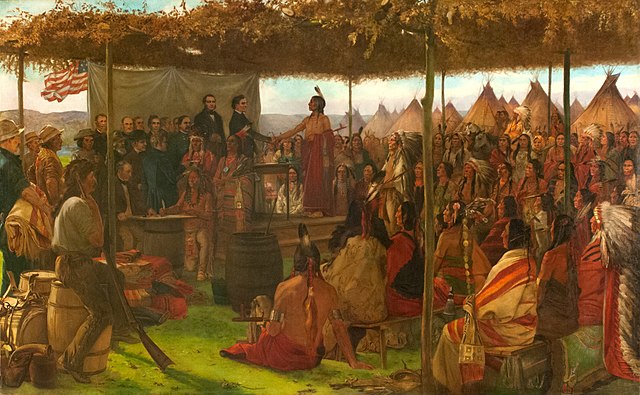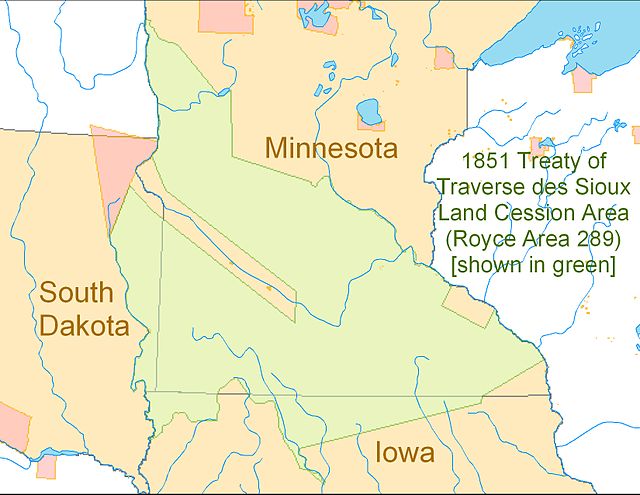Treaty of Traverse des Sioux
The Treaty of Traverse des Sioux was signed on July 23, 1851, at Traverse des Sioux in Minnesota Territory between the United States government and the Upper Dakota Sioux bands. In this land cession treaty, the Sisseton and Wahpeton Dakota bands sold 21 million acres of land in present-day Iowa, Minnesota and South Dakota to the U.S. for $1,665,000.
Treaty of Traverse des Sioux by Francis Davis Millet
Sleepy Eye was the region's elder statesman.
Governor Alexander Ramsey
Treaty of Traverse des Sioux land cession area shown in green across northern Iowa, southern Minnesota and eastern South Dakota.
Traverse des Sioux is a historic site in the U.S. state of Minnesota. Once part of a pre-industrial trade route, it is preserved to commemorate that route, a busy river crossing on it, and a nineteenth-century settlement, trading post, and mission at that crossing place. It was a transshipment point for pelts in fur trading days, and the namesake for an important United States treaty that forced the Dakota people to cede part of their homeland and opened up much of southern Minnesota to European-American settlement.
Minnesota River at Traverse des Sioux
View from camp, Traverse des Sioux, July 24, 1851Frank Blackwell MayerThe Minnesota River valley, a canoe or boat on the river, cabins, a tipi, Indians, and traders are shown.
Traverse des Sioux campFrank Blackwell Mayer, 1851.







